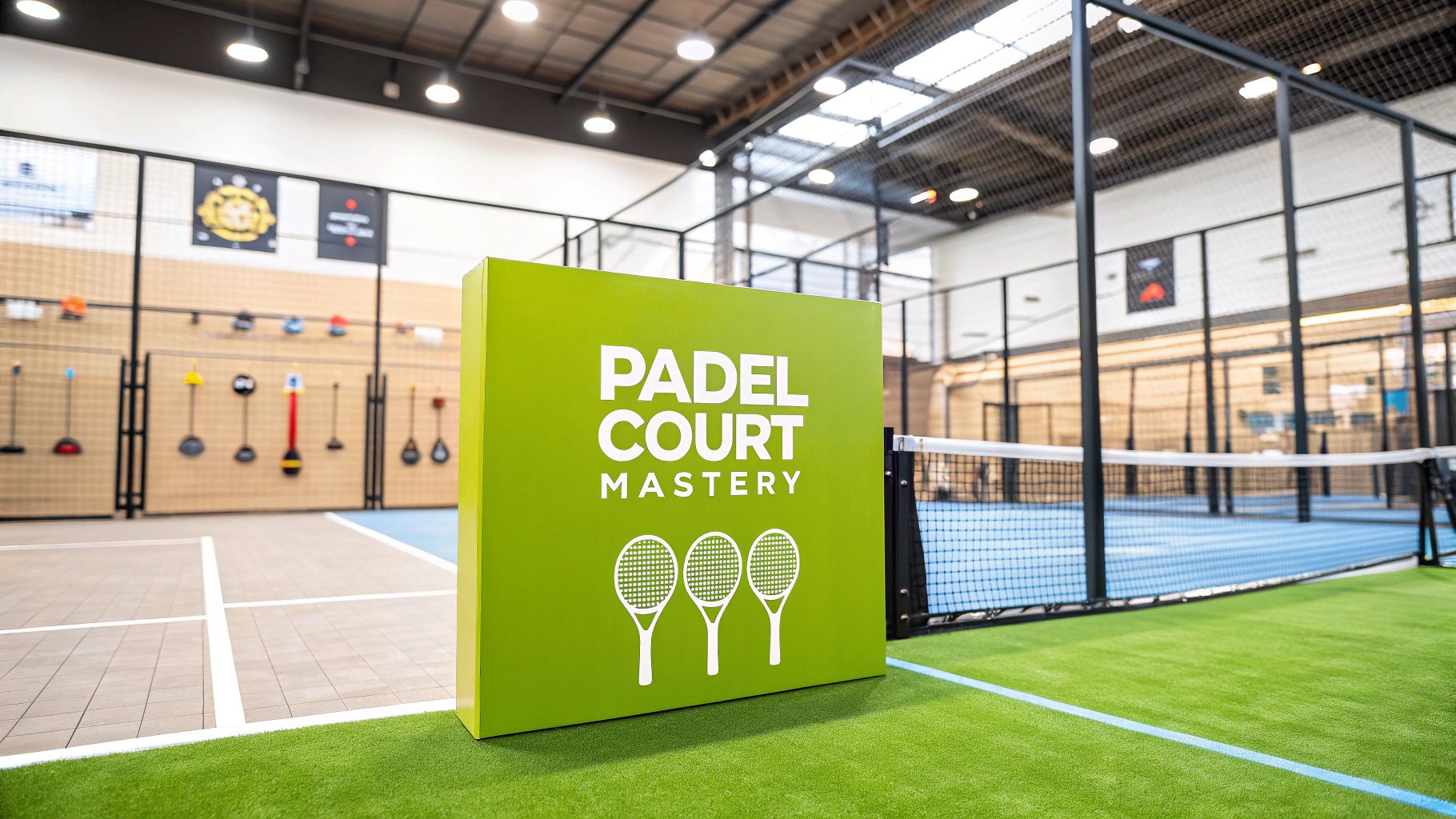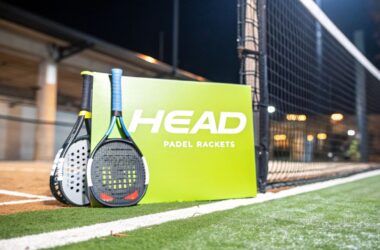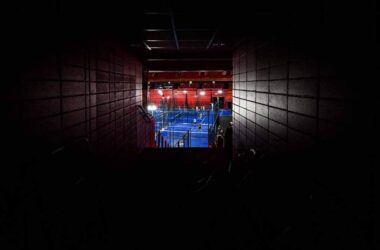The rapid growth of padel has created a competitive landscape where exceptional court management is no longer a luxury, it's essential for success. Beyond just clean courts and working lights, operators must adopt sophisticated strategies to optimize every aspect of their venue. This guide dives deep into the core facility management best practices, specifically adapted for the unique demands of a padel club. We will move beyond generic advice and provide a clear, actionable blueprint for excellence.
You will learn how to implement a proactive maintenance schedule that prevents costly downtime, integrate technology to streamline bookings and operations, and master cost control without sacrificing quality. We'll explore ten critical areas, from smart scheduling and risk management to enhancing the complete player journey from arrival to departure. To provide a comprehensive overview of operating your club effectively, you can also delve into best practices for the modern management of sports facilities.
Implementing these targeted strategies will not only make your operations more efficient and profitable but also cultivate a loyal community of players who view your club as their go-to destination. Let's unlock the framework for running a world-class padel facility that consistently stands out from the competition.
1. Preventive Maintenance Program for Courts and Amenities
A proactive maintenance strategy is the cornerstone of successful facility management best practices, shifting focus from reactive repairs to scheduled, preventive care. This approach involves systematic inspections, cleaning, and servicing of all assets, from the court surface to the cafe espresso machine. For padel facilities, this means consistently checking turf conditions, glass panel integrity, net tension, and lighting functionality before they fail, ensuring a safe and high-quality player experience.

Buy the best padel gear to level up your next game!
CHECK OUT this deal from Padel Market!Get ready to take your game to the next level with the latest padel gear from Padel Market! Fast EU and Worldwide Shipping
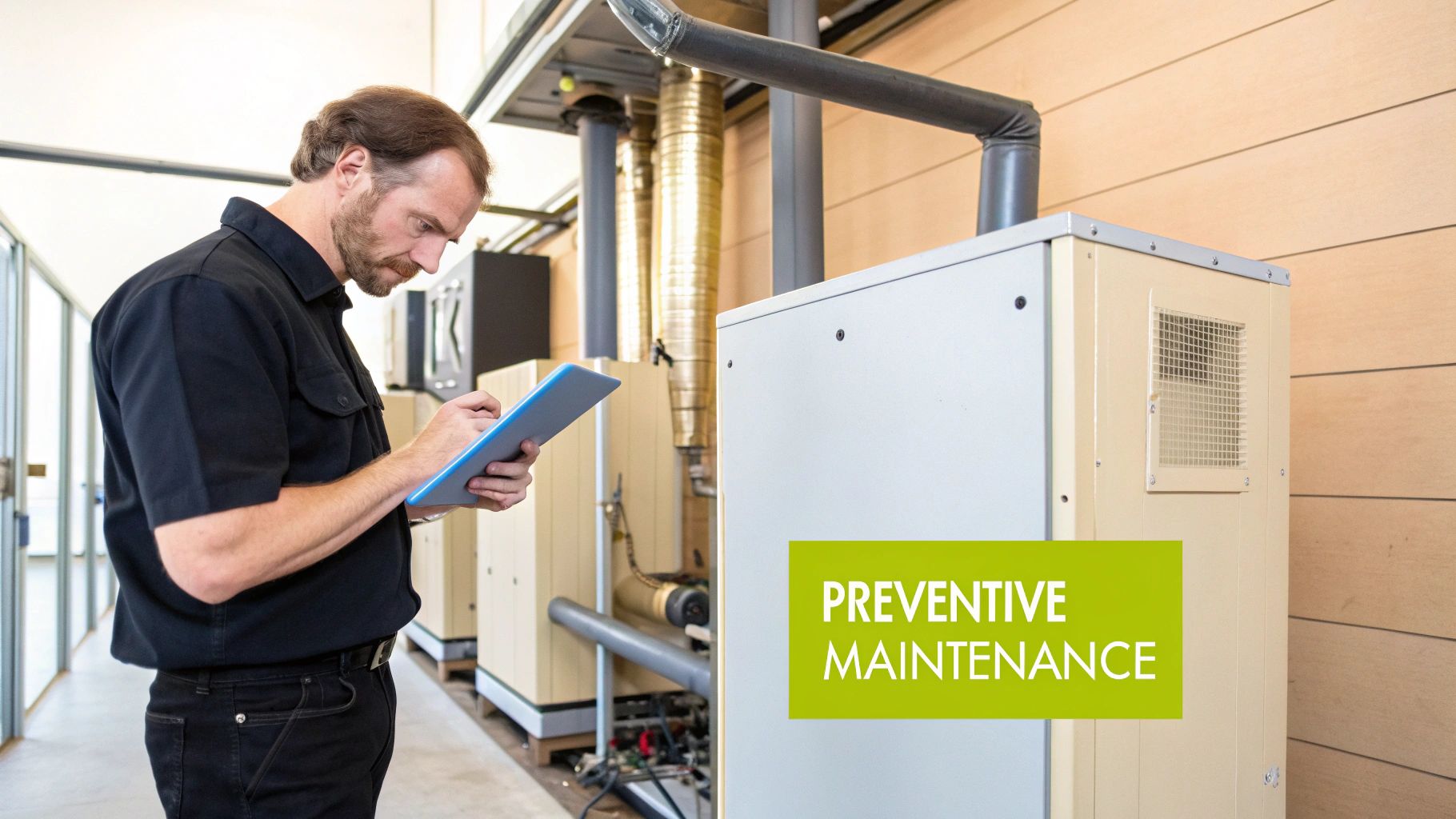
Implementing this system significantly reduces unexpected downtime and costly emergency repairs. For instance, a UK-based padel club that introduced quarterly glass inspections successfully cut panel cracks by 35%. This proactive stance not only extends the lifespan of critical assets but also upholds your facility’s reputation for quality and reliability.
Key Implementation Steps
To build a robust program, start by prioritizing your most critical assets. The court surface, glass walls, and structural frame are the most vital components for gameplay and safety.
- Establish a Baseline: Use manufacturer guidelines for your turf, glass, and lighting systems as the starting point for your maintenance schedule.
- Document Everything: Maintain a detailed log for all maintenance activities. This digital or physical record helps you track trends, identify recurring problems, and prove due diligence.
- Empower Your Team: Train all staff, including front desk and cleaning crews, to spot early warning signs of wear like loose turf fibers, minor glass chips, or flickering lights during their daily routines.
By adopting a preventive mindset, you ensure your facility operates at peak performance, maximizing court availability and revenue. Understanding the specifics of court construction is crucial for effective maintenance; you can explore an in-depth guide on the different types of padel courts available to tailor your program.
2. Integrated Workplace Management System (IWMS)
An Integrated Workplace Management System (IWMS) is a powerful software platform that centralizes all facility management operations into a single, cohesive dashboard. This technology streamlines everything from court booking and maintenance scheduling to real estate portfolio management and energy consumption tracking. For a padel facility, an IWMS creates a single source of truth, automating routine tasks and providing data-driven insights to optimize efficiency and player experience.
Adopting an IWMS translates directly to better decision-making and significant cost savings. While large corporations like Microsoft have saved millions annually by consolidating operations with an IWMS, the principles apply even to smaller padel venues. A multi-court facility, for instance, could use an IWMS to automate lighting and HVAC schedules based on real-time bookings, cutting energy costs by 15-20% and ensuring optimal court conditions.
Key Implementation Steps
To successfully integrate an IWMS, a strategic approach is essential. Start by defining clear objectives, whether it's reducing operational costs, improving maintenance response times, or enhancing space utilization.
- Define Clear Objectives: Before selecting a vendor, establish specific Key Performance Indicators (KPIs) you want to track, such as court utilization rates or average maintenance ticket resolution time.
- Ensure Data Quality: Clean and standardize all your existing data before migration. Accurate information on assets, bookings, and maintenance history is crucial for the system to function effectively.
- Develop a Training Program: Create a comprehensive training plan for all staff members who will interact with the system. User adoption is key to realizing the full potential of an IWMS.
By implementing an IWMS, you leverage one of the most impactful facility management best practices to create a smarter, more efficient, and profitable operation. Choosing the right software is the first step; you can explore a detailed guide on the best sports facility management software available to find a platform that fits your needs.
3. Energy Management and Sustainability Initiatives
An effective energy management strategy is a critical component of modern facility management best practices, moving beyond basic utility payments to a proactive approach that reduces costs and environmental impact. This involves systematically monitoring and controlling energy consumption across all facility operations, from court lighting to HVAC systems. For padel clubs, where high-intensity lighting is a major expense, optimizing energy use directly translates into significant operational savings and a stronger brand reputation.
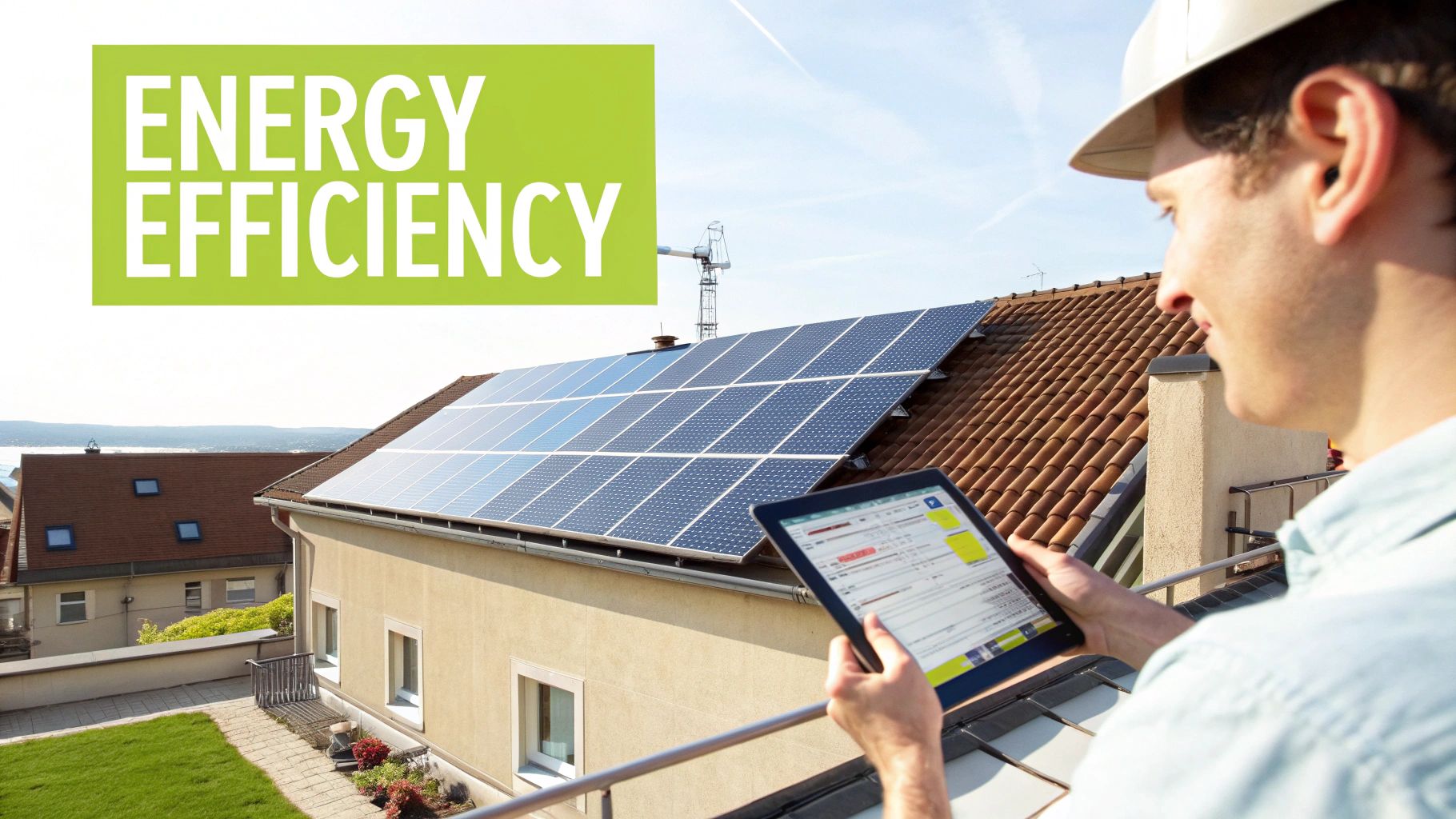
Implementing sustainability initiatives can yield impressive results. For example, the famous Empire State Building retrofit reduced energy use by 38%, saving $4.4 million annually. While a padel facility operates on a different scale, the principles are the same: efficiency upgrades create long-term financial benefits. A club that switches to LED court lighting and smart thermostats can easily cut its energy bills by over 30%, boosting its bottom line.
Key Implementation Steps
To launch a successful energy program, begin by understanding your current consumption patterns and identifying the most impactful areas for improvement. Court lighting and climate control typically offer the greatest potential for savings.
- Conduct an Energy Audit: Hire a professional or use an online tool to perform a comprehensive audit. This will pinpoint specific areas of energy waste and prioritize opportunities for upgrades.
- Implement Low-Cost Measures First: Start with simple changes like installing programmable thermostats, using motion sensors for lights in non-court areas, and setting lighting schedules to match booking times.
- Engage and Educate: Encourage staff and players to participate. Simple reminders to turn off lights or close doors can collectively make a big difference in your facility's energy consumption.
By focusing on sustainability, you not only lower operating costs but also appeal to an environmentally conscious clientele, enhancing your facility's market position.
4. Space Optimization and Workplace Strategy
A data-driven approach to designing and managing your facility’s layout is a key component of modern facility management best practices. This strategy moves beyond simply having enough courts and focuses on maximizing the utility of every square foot, from the pro shop to the spectator lounge. It involves analyzing how members and staff use the space and redesigning layouts to support diverse activities, boost efficiency, and align with your business goals. For a padel club, this means creating an environment that encourages social interaction, accommodates retail, and streamlines operational flow.
Implementing a thoughtful space optimization strategy can yield significant returns. For example, Deloitte reduced its real estate footprint by 30% through activity-based working, saving $15 million annually. While your padel facility operates on a different scale, the principle is the same: efficient space use directly impacts your bottom line by enhancing member experience and creating new revenue opportunities within the same footprint.
Key Implementation Steps
To effectively optimize your facility, begin with a thorough analysis of how your current space is utilized. Understanding the fundamental principles of space planning is essential to maximizing both the utility and aesthetic appeal of your Padel club.

Buy the best padel gear to level up your next game!
CHECK OUT this deal from Padel Market!Get ready to take your game to the next level with the latest padel gear from Padel Market! Fast EU and Worldwide Shipping
- Conduct a Utilization Study: Before making any changes, observe and track how members move through your facility for at least six weeks. Identify bottlenecks, underused areas, and high-traffic zones.
- Involve Your Community: Gather feedback from members and staff through surveys or focus groups. Their input is invaluable for understanding what works and what doesn't in the current layout.
- Create Diverse Zones: Design distinct areas for different activities. This could include a quiet work zone for members between matches, a vibrant social lounge, a dedicated stretching area, and an efficient retail display.
5. Comprehensive Risk Management and Business Continuity Planning
A forward-thinking approach to facility management best practices extends beyond daily operations to prepare for the unexpected. This involves a systematic process of identifying, assessing, and mitigating potential risks that could disrupt your padel facility, from severe weather to equipment failure or a public health crisis. The goal is to build resilience, ensuring your business can withstand disruptions and recover swiftly, protecting revenue, reputation, and customer safety.
Effective planning can be a significant competitive advantage. For example, during a major power outage, a sports complex with a tested generator and continuity plan was able to reopen within hours, capturing bookings from competitors who remained closed for days. This proactive strategy safeguards your assets and solidifies your facility’s status as a reliable and professionally managed venue.
Key Implementation Steps
Start by identifying all critical functions essential for your facility to operate, such as court bookings, payment processing, and safety systems. Then, build a plan to protect them.
- Conduct Regular Risk Assessments: Annually review potential physical, operational, and even cyber threats to your facility. What is the impact of a roof leak versus a booking system crash?
- Establish Recovery Objectives: Determine the maximum acceptable downtime for each critical function. Your online booking system might need to be back online in two hours, while a broken cafe dishwasher can wait 24 hours.
- Test and Refine Your Plan: Regularly run drills, such as a simulated power-outage or an emergency evacuation, to test your procedures. Use these exercises to identify weaknesses and train your staff, ensuring everyone knows their role in a crisis.
By integrating risk management into your operations, you ensure long-term stability and preparedness. This planning is a fundamental part of a strong operational framework, which you can further develop by creating a thorough sports facility business plan.
6. Vendor and Contract Management
Effective facility management best practices extend beyond your internal team to include a strategic approach to vendors, contractors, and suppliers. This involves more than just finding the cheapest option; it's about building strong partnerships that deliver quality, reliability, and value. For padel facilities, this covers everything from the company that cleans your courts to the contractor who repairs the glass and the supplier for your pro shop inventory.
A structured approach to vendor management directly impacts your bottom line and operational efficiency. For instance, a major retail chain that negotiated master service agreements with its HVAC vendors successfully reduced annual maintenance costs by 18%. By optimizing contracts and monitoring performance, you can ensure your facility receives high-quality service, controls costs, and mitigates risks associated with poor vendor performance.
Key Implementation Steps
To build a strong vendor management system, start by defining your needs and establishing clear criteria for all potential partners. This ensures every vendor aligns with your facility's standards for quality and safety.
- Establish Clear Criteria: Develop a vendor qualification checklist that includes financial stability, relevant experience, verified references, and proof of adequate insurance coverage.
- Define Performance in Contracts: Include specific Key Performance Indicators (KPIs), service level agreements (SLAs), and clear penalties or incentives in all contracts to hold vendors accountable.
- Conduct Regular Reviews: Schedule quarterly business reviews with strategic vendors to discuss performance, address issues, and align on future goals. This fosters a partnership rather than a purely transactional relationship.
By managing vendors proactively, you ensure every external service contributes positively to your facility’s operations, reputation, and profitability. For a deeper dive into financial management, Padel MBA offers insights that can help you structure your vendor budgets and contracts more effectively.
7. Data-Driven Decision Making and Performance Analytics
Embracing data-driven decision-making is a core tenet of modern facility management best practices. This approach involves systematically collecting, analyzing, and applying facility data to inform strategic decisions, optimize operations, and enhance the player experience. By establishing key performance indicators (KPIs) and using analytics tools, you can transform raw numbers into actionable insights on court utilization, energy consumption, and maintenance costs.
This strategy moves management from guesswork to evidence-based action. For example, WeWork leverages space utilization data to refine layouts, which improved member satisfaction by 23%. A padel facility could use similar data to optimize court scheduling, identify peak hours for staffing, and justify investments in new amenities based on clear demand patterns. This data-driven clarity ensures resources are allocated effectively, maximizing both profitability and player satisfaction.
Key Implementation Steps
To integrate analytics into your operations, focus on gathering meaningful data that aligns with your business goals. Start small and build momentum as you see the benefits.
- Identify Key Metrics: Begin with 5-10 crucial KPIs, such as court booking rates, average spend per player, and utility costs per court. Ensure these metrics directly reflect your facility's financial health and operational efficiency.
- Automate Data Collection: Use your booking software, smart thermostats, and lighting systems to automatically gather data. This minimizes manual effort and improves accuracy.
- Create Simple Dashboards: Develop role-based dashboards that present relevant information clearly. Your front-desk team might need to see real-time court availability, while management needs a high-level view of revenue and expenses.
By making data the foundation of your operational strategy, you can proactively address challenges and uncover opportunities for growth. This analytical approach, championed by organizations like the International Facility Management Association (IFMA), empowers you to run a smarter, more efficient padel facility.
8. Occupant Experience and Engagement
A human-centric approach is one of the most impactful facility management best practices, shifting the focus from the building itself to the people within it. This strategy prioritizes the needs, comfort, and satisfaction of players and staff, creating a positive and welcoming environment. For padel facilities, this means curating an exceptional experience through superior amenities, clear communication, and responsive support that boosts player loyalty and enhances your club’s reputation.
Focusing on the occupant experience directly impacts your bottom line through increased bookings and higher membership retention. For example, a Spanish padel club that implemented a simple player feedback system via a mobile app saw a 25% increase in repeat bookings after addressing common concerns like court booking friction and locker room cleanliness. This proves that listening to your occupants and acting on their feedback is a powerful driver for growth.
Key Implementation Steps
To elevate the occupant experience, you must actively seek out and respond to feedback. The players, members, and staff using your facility daily are your greatest source of insight.
- Establish Feedback Channels: Implement multiple ways for occupants to share their thoughts, such as quarterly pulse surveys, an in-app feedback feature, or suggestion boxes.
- Close the Loop: Always communicate the actions you've taken based on feedback. If players ask for better court lighting and you upgrade it, announce the improvement to show you are listening.
- Train Staff in Service: Empower your entire team, from reception to maintenance, with customer service training. A friendly, helpful interaction can significantly improve a player’s overall perception of your facility.
By treating occupant satisfaction as a key performance indicator, you transform your facility from just a place to play into a thriving community hub. This proactive focus on people is essential for long-term success.
9. Technology Integration and Smart Building Implementation
Integrating smart technology is a forward-thinking facility management best practice that transforms a padel club from a passive building into a responsive, intelligent environment. This involves deploying connected technologies like IoT sensors, automated lighting and climate control, and smart security systems. For a padel facility, this could mean automated court lighting that activates only when booked, or HVAC systems that adjust based on real-time occupancy, ensuring player comfort while slashing energy consumption.
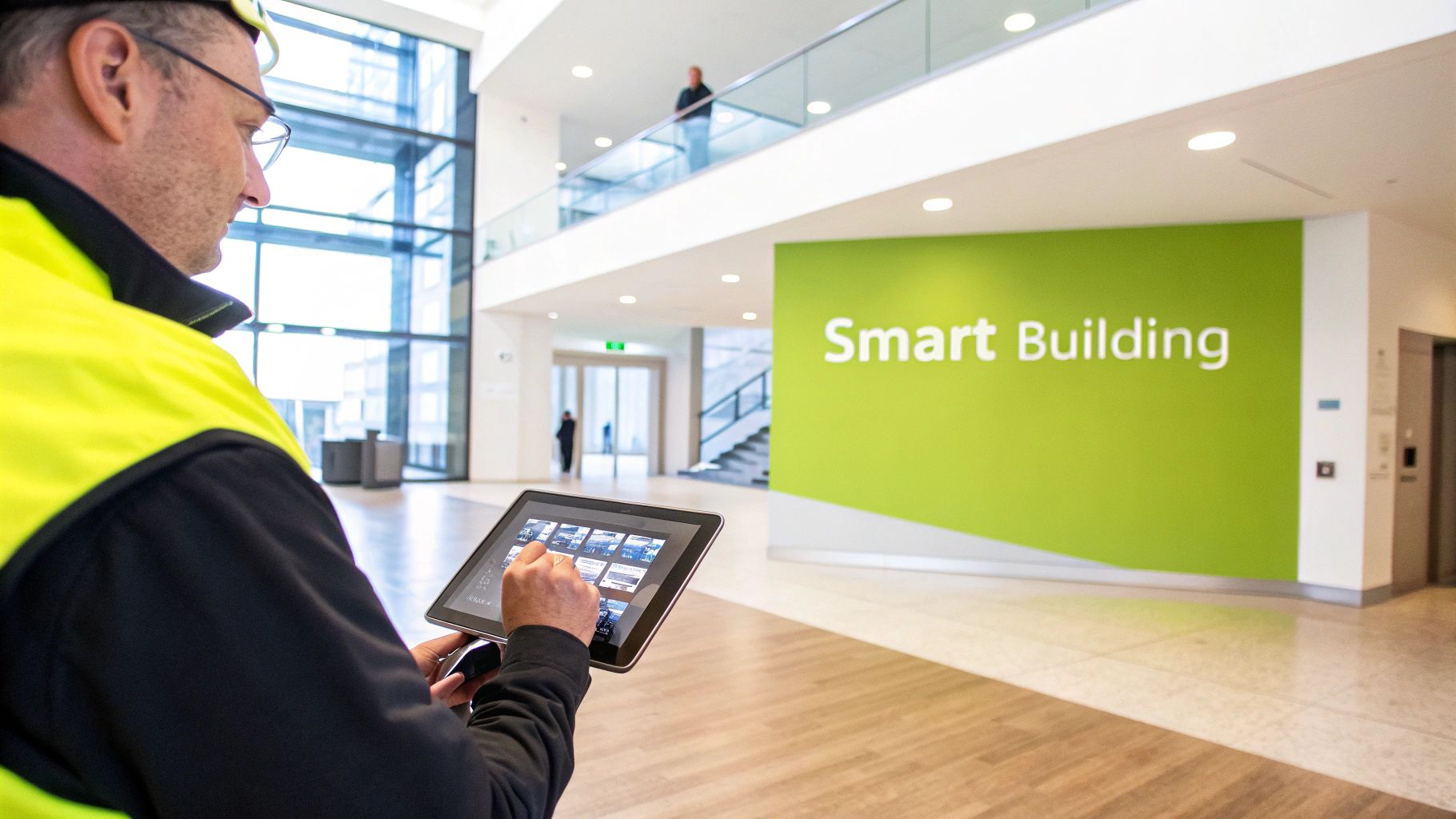
The strategic use of technology directly enhances both operational efficiency and the customer experience. For instance, Amsterdam's smart building, The Edge, utilizes 28,000 sensors to achieve a 70% reduction in energy use, demonstrating the immense potential for cost savings. In a padel club, this could translate to automated alerts for maintenance needs, streamlined booking systems, and a superior, modern environment for members.
Key Implementation Steps
To effectively integrate smart technology, focus on solving specific problems rather than adopting technology for its own sake. Start small with high-impact areas like energy management or access control.
- Prioritize Use Cases: Identify key operational pain points. Are energy bills too high? Is court access management inefficient? Start with technology that provides a clear and measurable solution.
- Ensure a Solid Foundation: A robust and secure Wi-Fi network is the backbone of any smart facility. Invest in high-quality network infrastructure before deploying IoT devices to ensure reliability.
- Train Your Team: New systems are only effective if your staff knows how to use them. Provide thorough training on how to operate new technologies and interpret the data they provide to make informed decisions.
By embracing smart building implementation, you create a more efficient, secure, and enjoyable facility, future-proofing your operations and setting your club apart from the competition.
10. Compliance Management and Regulatory Adherence
Navigating the complex landscape of local, regional, and national regulations is a critical component of facility management best practices. This involves a systematic approach to identifying and adhering to all applicable laws, from building codes and fire safety standards to accessibility requirements and employment laws. For a padel facility, this means ensuring your courts meet specific safety certifications, your public areas are ADA compliant, and your business licenses are always current.
A proactive compliance strategy protects your business from significant fines, legal disputes, and reputational damage. For example, a multi-site sports retailer that standardized ADA compliance across its locations successfully avoided costly litigation and improved accessibility for all customers. This structured approach moves compliance from a reactive worry to a manageable, ongoing process that safeguards your investment.
Key Implementation Steps
To effectively manage regulatory requirements, integrate compliance into your daily operational framework. This ensures that legal standards are met consistently, not just during audits or inspections.
- Create a Compliance Calendar: Develop a centralized calendar that tracks all key deadlines for permit renewals, inspections, and required reporting.
- Assign Clear Ownership: Designate a specific person or team responsible for monitoring regulatory updates and ensuring all requirements are met.
- Conduct Internal Audits: Regularly perform self-inspections using official checklists to identify and rectify potential issues before a formal inspection occurs. This proactive step is key to maintaining a strong compliance record.
By embedding regulatory adherence into your operations, you build a resilient facility that prioritizes safety, operates legally, and minimizes organizational risk.
Facility Management: Top 10 Practices Compared
| Strategy / Practice | Implementation Complexity 🔄 | Resource Requirements ⚡ | Expected Outcomes 📊⭐ | Ideal Use Cases 💡 | Key Advantages ⭐ |
|---|---|---|---|---|---|
| Preventive Maintenance Program | Moderate — CMMS integration, scheduling (🔄🔄) | Moderate — staff time, CMMS, spare parts | Reduces emergency repairs 30–50%; extends life up to 40% 📊 ⭐⭐⭐⭐ | Critical assets, warehouses, production lines | Predictable budgets; reduced downtime |
| Integrated Workplace Management System (IWMS) | High — enterprise rollout 6–18 months (🔄🔄🔄) | High — software ($50k–$500k+), data cleanup, training ⚡⚡ | Improves space utilization 15–30%; cuts ops costs 10–25% 📊 ⭐⭐⭐⭐ | Large portfolios, corporate real estate consolidation | Single source of truth; integrated workflows |
| Energy Management & Sustainability | Moderate–High — audits, retrofits, BAS tuning (🔄🔄) | Variable — capital for upgrades; payback 2–10 yrs ⚡ | Energy savings 20–40%; improved ESG ratings 📊 ⭐⭐⭐⭐ | High-energy facilities; sustainability targets | Lower energy cost; incentives and higher asset value |
| Space Optimization & Workplace Strategy | Moderate — analytics + change management (🔄🔄) | Moderate — analytics tools, redesign, tech | Reduces real estate costs 20–40%; utilization to 70–85% 📊 ⭐⭐⭐⭐ | Hybrid workforces, consolidation, growth planning | Better utilization; improved productivity & agility |
| Comprehensive Risk Management & BCP | High — assessments, drills, multi-site plans (🔄🔄🔄) | Ongoing — planning, training, redundancies ⚡ | Minimizes downtime; protects occupants; faster recovery 📊 ⭐⭐⭐⭐ | Critical operations, regulated industries, multi-site orgs | Resilience; reduced liability and insurance risk |
| Vendor & Contract Management | Moderate — selection, SLAs, scorecards (🔄🔄) | Moderate — dedicated staff, contract tools ⚡ | Lowers costs (examples ~18–22%); consistent service quality 📊 ⭐⭐⭐ | Outsourced services, many suppliers, cost-control programs | Cost control; accountability; supplier performance |
| Data-Driven Decision Making & Analytics | Moderate — data pipelines, dashboards (🔄🔄) | Moderate — analytics tools, data governance, skills ⚡ | Identifies savings; better forecasting; predictive insights 📊 ⭐⭐⭐⭐ | Organizations pursuing continuous improvement | Evidence-based decisions; KPI transparency |
| Occupant Experience & Engagement | Low–Moderate — surveys, apps, services (🔄) | Ongoing — amenities, apps, program costs ⚡ | Increases productivity 5–15%; higher satisfaction 📊 ⭐⭐⭐ | Talent-focused workplaces, HQs, client-facing sites | Employee retention; improved adoption of spaces |
| Technology Integration & Smart Buildings | High — IoT, BMS integration, cybersecurity (🔄🔄🔄) | High — $2–$7+/sqft, network & specialist teams ⚡⚡ | Energy −20–40%; maintenance −15–30%; rich telemetry 📊 ⭐⭐⭐⭐ | New builds, high-performance portfolios, innovation pilots | Automation, predictive ops, superior data for decisions |
| Compliance Management & Regulatory Adherence | Moderate–High — audits, documentation (🔄🔄) | Moderate — compliance staff, record systems ⚡ | Avoids fines; ensures legal compliance and safety 📊 ⭐⭐⭐⭐ | Healthcare, manufacturing, multi-jurisdiction sites | Risk mitigation; maintained insurance and reputation |
Putting It All Together: Building a Thriving Padel Ecosystem
Navigating the landscape of modern facility management can feel like a complex, multi-faceted game. However, as we've explored, mastering the fundamentals transforms this challenge into a significant competitive advantage for any padel club. The journey from a basic facility to a premier padel destination is paved with strategic, proactive decisions. It's about shifting your mindset from simply fixing problems as they arise to anticipating needs and optimizing every aspect of your operation before it becomes a concern.
The ten facility management best practices detailed in this guide are not isolated strategies; they are interconnected components of a single, high-performing system. Your preventive maintenance program (Item 1) is made more efficient by a robust IWMS (Item 2). Your energy management initiatives (Item 3) provide the data needed for performance analytics (Item 7). And a superior occupant experience (Item 8) is the direct result of well-managed vendors, optimized spaces, and seamless technology integration. This synergy is where the magic happens, creating an environment that runs smoothly, controls costs, and keeps players coming back.
From Theory to Action: Your Next Steps
The key takeaway is that excellence is achieved through incremental, consistent effort. Attempting a complete overhaul overnight is a recipe for frustration. Instead, focus on a phased implementation that builds momentum and delivers tangible results.
- Start with a Quick Win: Begin with the area that offers the most immediate impact for your club. Is your booking system clunky? Focus on technology integration (Item 9). Are player complaints about court conditions on the rise? Prioritize a detailed preventive maintenance schedule (Item 1).
- Leverage Data Immediately: You don't need a complex system to start making data-driven decisions (Item 7). Begin by tracking court utilization rates against energy consumption. Use simple surveys to gather feedback on player experience (Item 8) and use that qualitative data to inform your priorities.
- Build Your Foundation: Once you have some momentum, focus on foundational elements like vendor management (Item 6) and compliance adherence (Item 10). Getting these right ensures your operations are stable, secure, and built on a professional framework.
The True Value of Operational Excellence
Ultimately, adopting these facility management best practices is about more than just operational efficiency. It’s about building a brand, a community, and a sustainable business. A well-managed facility is a safe, welcoming, and enjoyable place to be. It tells your members that you care about their experience, from the moment they book a court online to the quality of the lighting during an evening match. This commitment to excellence fosters loyalty, generates positive word-of-mouth, and solidifies your club's reputation as the go-to destination for padel enthusiasts. By investing in these practices, you are investing directly in the long-term success and profitability of your padel ecosystem.
Ready to take your padel facility to the next level? For in-depth guides on everything from court surfacing technology to the latest in club management software, explore the expert resources at Padel Rumors. Visit Padel Rumors to find the tools and knowledge you need to turn operational best practices into your greatest asset.





